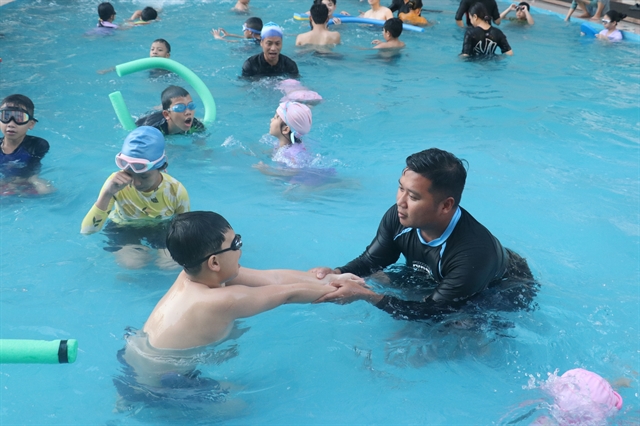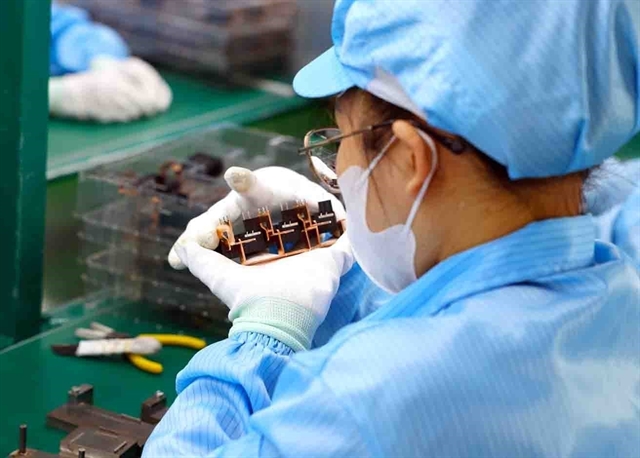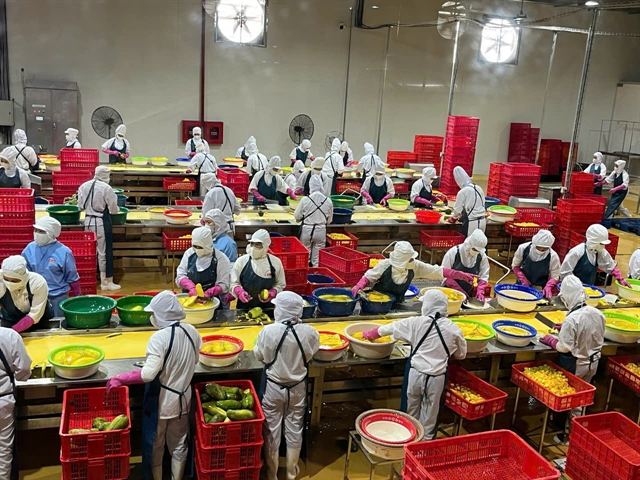 Society
Society

 |
| Children in Thái Bình Province participate in a swimming lesson during the summer break. — VNA/VNS Photo Vũ Quang |
HÀ NỘI — Summer break is the most anticipated time for children, but it also presents increasing risks of domestic accidents and injuries.
Within the first few weeks of this year’s summer break, the National Children’s Hospital saw 14 young patients admitted to its Paediatric Orthopaedics Department.
According to department head Dr Hoàng Hải Đức, many of the patients sustained severe damage with permanent loss of function.
Among these cases was a boy in Nghệ An Province who lost four fingers after placing his hand into a milk tea sealing machine at his family shop while his mother was busy serving customers.
Another boy in Hà Nội suffered fourth-degree burns after touching the belt of a treadmill, requiring skin grafts and prolonged treatment.
In HCM City, both Children’s Hospitals 1 and 2 have reported a rise in cases involving children falling from balconies, choking on objects, suffering burns or being involved in traffic accidents while riding on bicycles or electric bikes.
“Children are curious and quick to imitate adults. Just one moment of negligence can result in electrical shocks, burns, chemical ingestion or falls,” said head of emergency at Children’s Hospital 1 Dr Đinh Tấn Phương.
Outdoor activities also present major risks: more than 50 per cent of fatal accidents involving children are due to drowning.
Dr Huỳnh Thị Thúy Kiều, deputy head of emergency at the Children’s Hospital 2 in HCM City, noted that drowning can occur “in an instant,” even among children who know how to swim.
For younger children, risks exist even in a water tub or traditional ceramic jars placed in the family’s yard. For older children, swimming in ponds or rivers unsupervised is extremely dangerous.
About four to six minutes of oxygen deprivation can leave lasting neurological damage, she said.
Meanwhile, a growing number of hospitalisations due to dog bites also have also prompted concerns among paediatric doctors.
Dr Trần Quang Đại from the vaccination centre of the National Hospital for Tropical Diseases warned: “Even if a dog or cat has been vaccinated against rabies, infection risks remain if booster shots aren’t administered annually.
“Any child bitten, even with minor injuries, must be monitored and vaccinated promptly.”
This summer, Nghệ An Obstetrics and Paediatrics Hospital also received numerous child patients involved in traffic or domestic accidents, according to Dr Thái Văn Bình, the hospital’s department head of orthopaedic trauma and burns.
Many of them sustained severe injuries that pose a threat to their lives, he said.
Bình advised that when an accident occurs, adults should first move the child out of harm’s way, check for injuries and stop any bleeding if necessary.
The doctor cautioned against roughly lifting or bending the child’s neck, which could cause spinal cord damage. The child should then be taken to the nearest medical facility for emergency care.
“Young children are highly prone to accidents if left unsupervised,” he emphasised. “That’s why close monitoring and ensuring a safe environment for them are key to preventing injuries.”
Experts also argue that household accidents involving children are not only the result of momentary risks, but also reflect a gap in supervision and life skill education.
Dr Phương said: “Many hospitalisations could have been less serious if adults had administered proper first aid in time.
“Some children suffered electrocution, burns or drowning incidents, but instead of calling emergency services, many families relied on home remedies, which delayed timely treatment.”
Dr Kiều added that children should be taught daily to recognise and avoid risks posed by everyday household items, such as batteries, coins, phone charger cords or water tubs. This knowledge should not be left to occasional awareness campaigns, she said.
As preventing accidents among children is a shared responsibility of the entire community, local authorities, youth unions and schools must take a more proactive role in organising practical, age-appropriate safety lessons, especially in rural and mountainous areas where children have limited access to basic life skills training. — VNS




